The Heineken Experience features an extensive collection of antique pictures, brass beer tanks, embellishments, and other items.
This Heineken collection will assist you in learning about the brewery’s history.
You may see yeast vats, antique marketing prints, and other objects from an extensive collection of memorabilia gathered over 150 years when you visit the Heineken Experience.
Get your Heineken experience tickets and savor the ultimate beer-lovers paradise. Dive into the world of brewing!
Heineken legacy collection
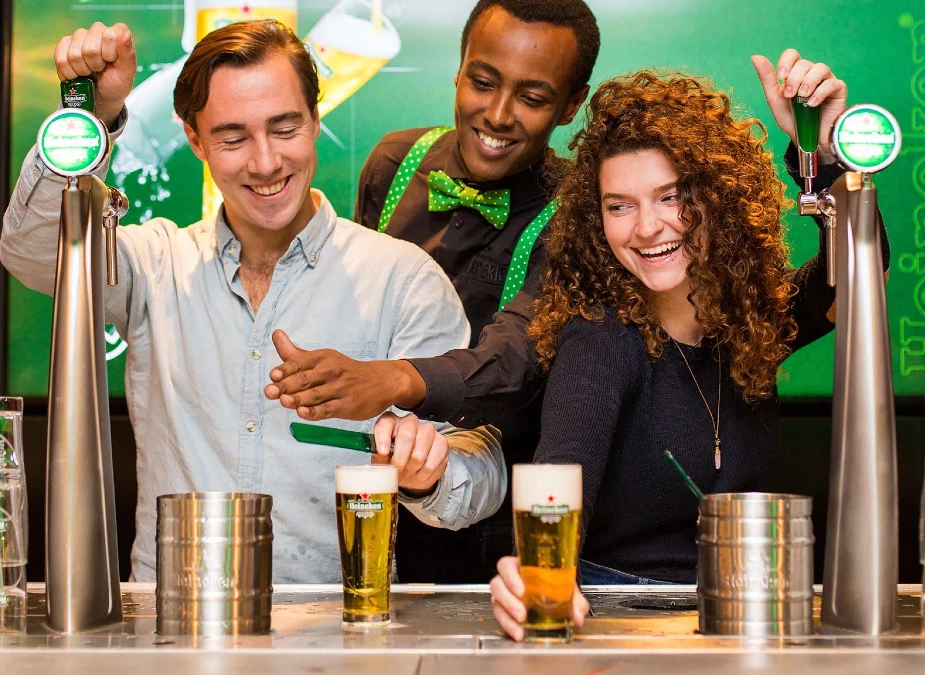
You can find everything about the Heineken brewery here.
Gerard Adriaan Heineken
The Heineken Experience, according to its description, “Gerard Adriaan Heineken, then 22, founded Heineken & Co. on 15 February 1864.
So began a great family heritage of producing high-quality beer.
Adriaan demonstrated incredible bravery and ingenuity in starting the Heineken Brewery and an overwhelming commitment to providing the best product possible.
Bierbrouwerij Maatschappij
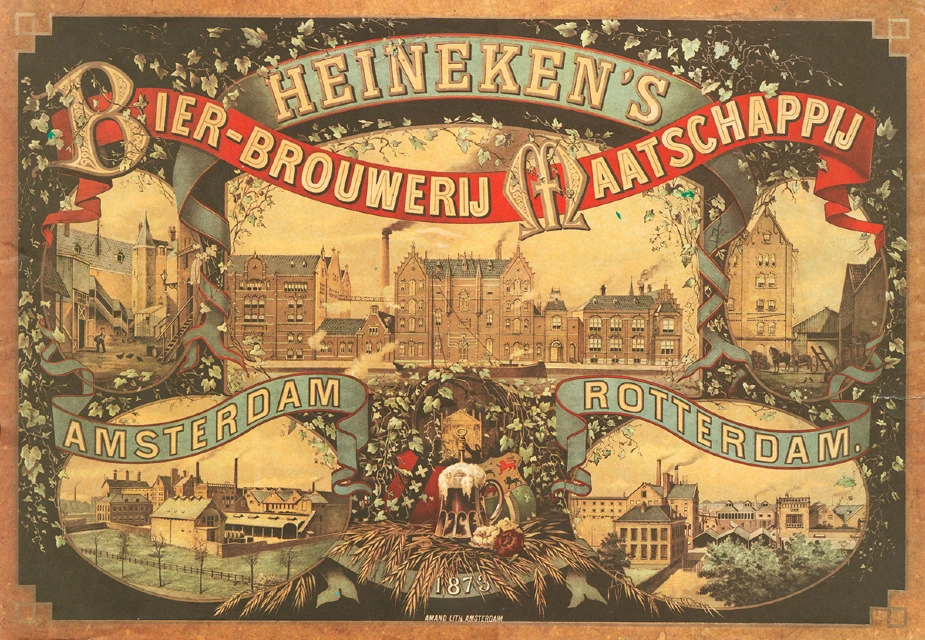
Bierbrouwerij Maatschappij is a poster from the early 1900s. There are antique Heineken posters and signage around the old brewery.
Silos for storage
Fifteen enormous storage silos are up to 65 feet tall in the old Heineken brewery.
According to a sign, the silos held malted barley for manufacturing and brewing Heineken.
Historically, barely arrived by ship was lifted to the top of the building.
The brewing process carried out up to six brews for 24 hours daily and directly deposited the beer into these historic silos.
The original kettle
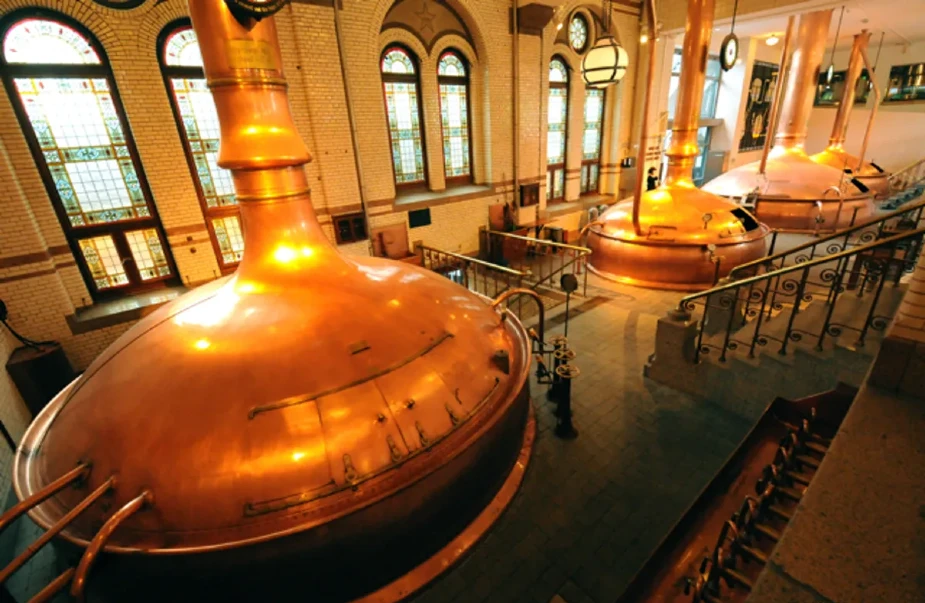
Heineken installed four original copper kettles in 1913; one is found here. Additionally, four more kettles were added in 1956.
The price list
A price list from the early 1900s from the Die Port van Cleve Hotel in Amsterdam shows a range of Heineken beers.
Fermentation vessel
In the 1960s, a stainless steel fermentation tank was erected in the Heineken Brewery.
“The fresh beer was transferred into these tanks along with Heineken’s famous ‘A’ yeast, and are allowed to ferment for three weeks before it gets bottled,” reads a sign regarding the tanks.
Ceramic tankard from the nineteenth century
A late-nineteenth-century ceramic tankard is on display at the Heineken Experience in Amsterdam.
Horse-drawn carriage
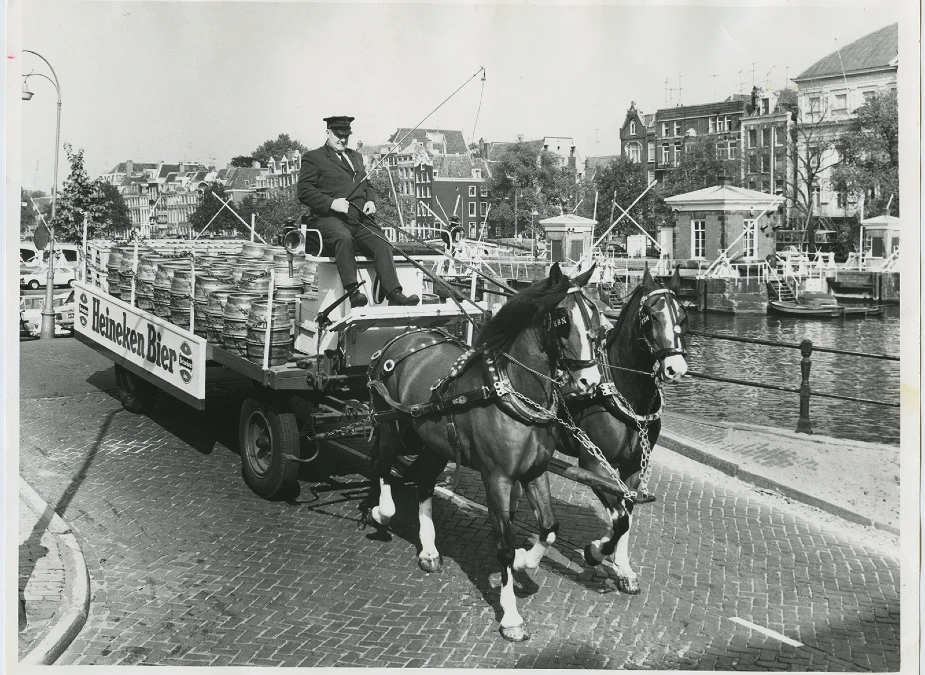
Horses have always been a key part of Heineken, from the creation of the Heineken Brewery in 1864 until the beginning of the 1960s.
The beer barrels were transported to local cafes and institutions in Amsterdam by horse and cart.
WOBO containers
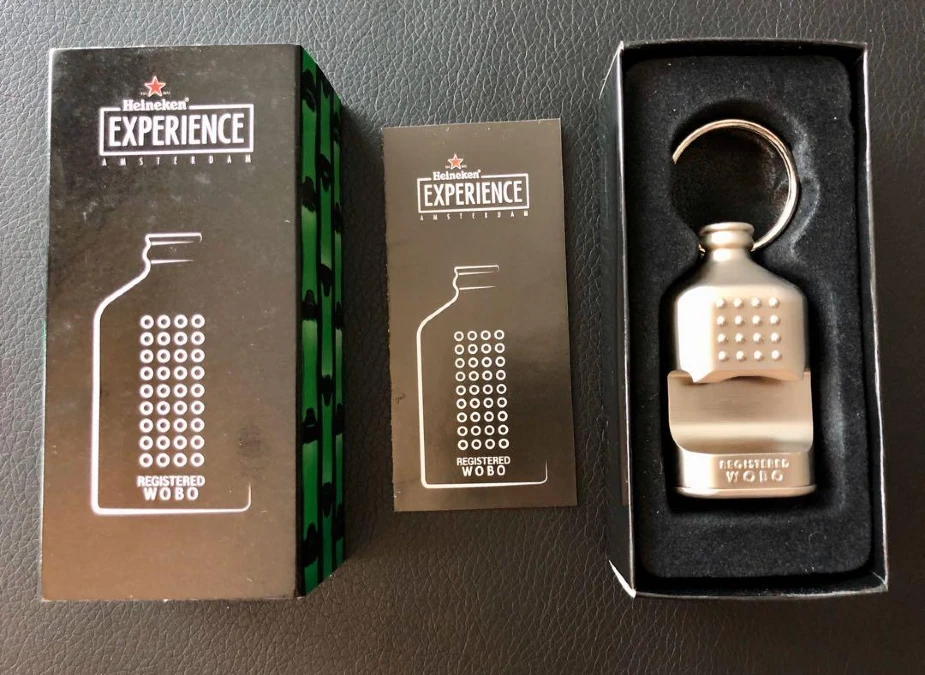
After experiencing poverty on Curacao Island in 1960, Alfred Heineken came up with an idea for sustainable housing.
He commissioned Dutch architect John Habraken to create the World Bottle, or ‘Wobo,’ as it became known. Freddy [Heineken] called it a “brick that contains beer.”
The vacant Wobo could be used to construct low-cost housing.
The Heineken Wobo underwent multiple design iterations with one goal: to create an interconnecting and self-aligning bottle.
A final design was developed, and two sizes—350 and 500 mm—were produced.
On the other hand, the bottle was always a concept.
Heineken brand logos
Several Heineken logos from the company’s 147-year history are also here.
According to the business, the red star that appears on all of Heineken’s beer labels dates back to the 14th century.
It is one of the oldest and most intriguing emblems in beer-producing history.
It is supposed that medieval brewers hung the eternal symbol of the star above their vats to safeguard and ensure the quality of the brew.
The five-pointed star’s protective abilities represented earth or soil, fire, wind, and water, with the fifth star point signifying an unknown element that the brewers believed was magic.
Bottle filling
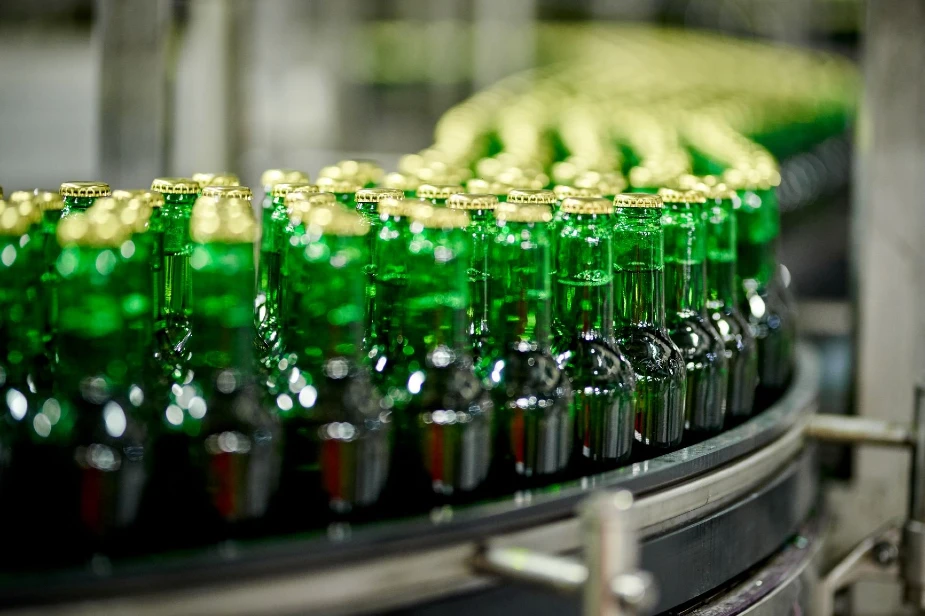
The old Heineken brewery, now home to the Heineken Experience, no longer brews Heineken. However, a scaled-down bottling system demonstrates the process.
The first step is to wash the bottle. Following that is a bottle test, followed by the filling of the bottles.
The caps are then applied, or the bottles are “crowned.” The Heineken labels are then used.
Finally, the bottles are inspected before being packaged.
Heineken keg collection
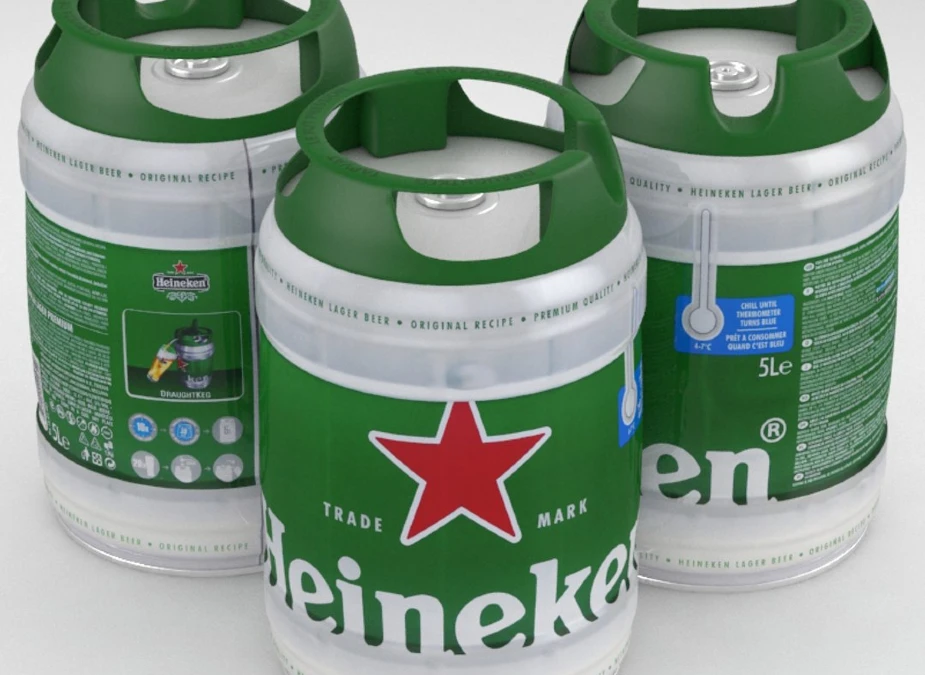
The Heineken keg is a five-liter keg full of premium Heineken beer.
The Heineken keg collection is a testament to the rich brewing heritage and craftsmanship of one of the world’s most renowned beer brands.
The collection captures the essence of Heineken’s commitment to quality and innovation with a wide array of kegs featuring iconic designs and innovative features.
Each keg is meticulously crafted using premium materials, ensuring optimal preservation of the beer’s taste and freshness.
Whether it’s the classic stainless steel keg with the distinctive green logo or the sleek and modern aluminum keg, the Heineken collection offers a variety of options to suit different occasions and settings.
These kegs serve as functional containers and symbols of celebration, bringing people together to enjoy the exceptional taste and experience Heineken is known for.
Indulge in the ultimate Heineken Experience – check out the types of tickets and plan your visit to the world of brews like never before!
Heineken bottle collection

Spanning a wide range of designs and styles, each bottle in this collection is a work of art in its own right.
Heineken has masterfully crafted a collection that appeals to both avid collectors and beer enthusiasts alike.
The iconic green glass bottle is at the heart of the Heineken bottle collection.
But the Heineken bottle collection goes beyond the traditional green glass bottle.
It ventures into the realm of limited-edition releases that collectors worldwide highly sought after.
Brand-new copper kettles
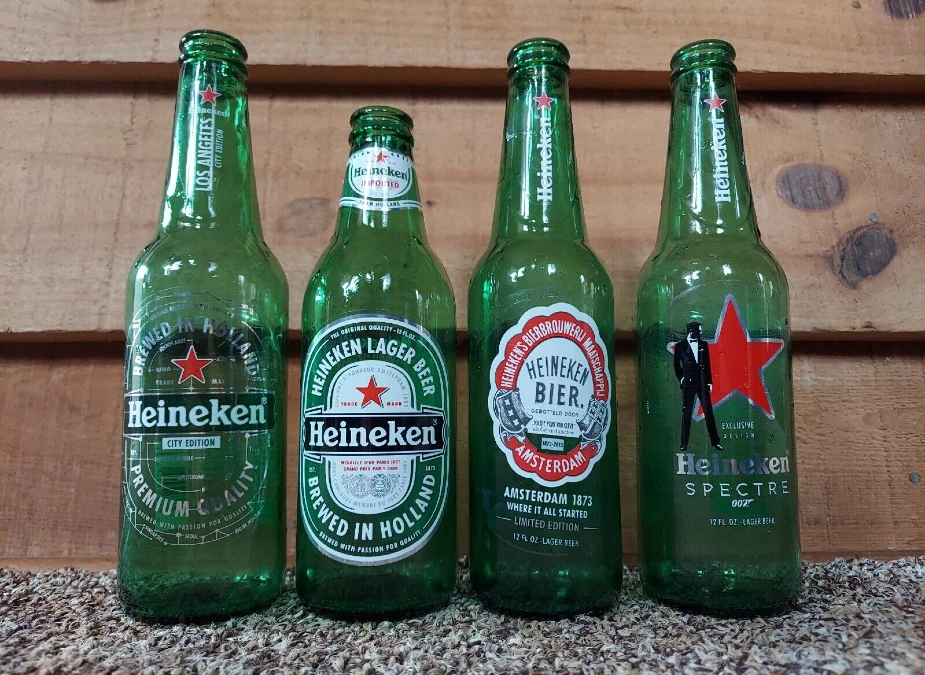
Heineken erected four additional copper kettles in 1956.
Wort This is wort used in the production of Heineken beer. Water and barley are boiled and filtered.
Bottle from the year 1939
In 1939, this Heineken bottle was a new design for the Dutch market.
Four bottles of Heineken
Heineken introduced four different bottles over the years.
The first bottle, used for export to the United States in 1933, was followed by a 1948 “Apollinaris” bottle, the same type used when Heineken initially bottled its beer in 1931.
The company’s common export bottle, which dates from 1970, is the third one.
The first Heineken longneck bottle, introduced in 1996, is the fourth one.
Paco and Icone
Heineken has been brewing beer since 1864 and has employed a variety of bottles.
The Paco, from 2004, was intended for a fun night out on the town. It was an award-winning, simple, and elegant molded aluminum design.
While the Icone, from 2006, was made from aluminum materials and designed by France’s Ora-Ito.
Featured Image: Heinekenexperience.com



